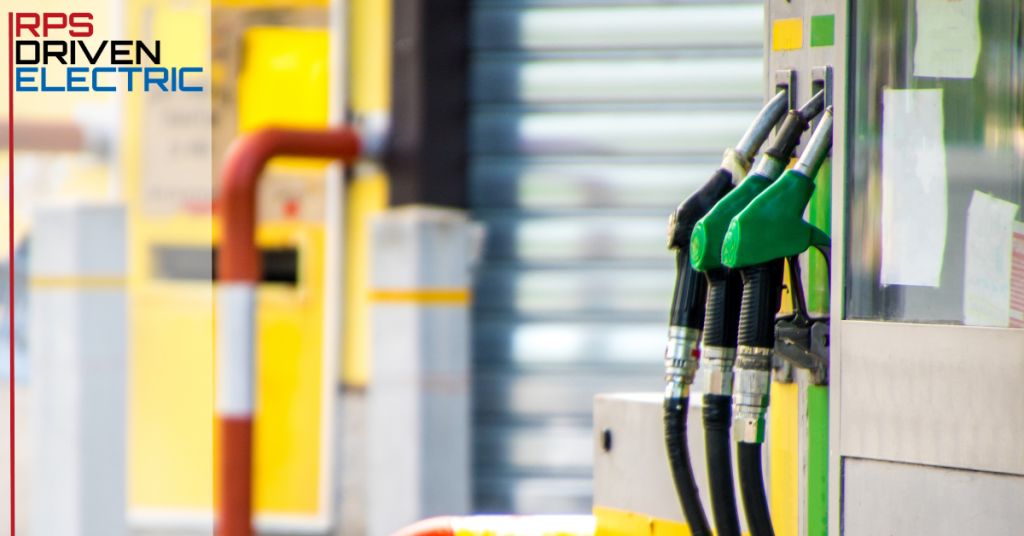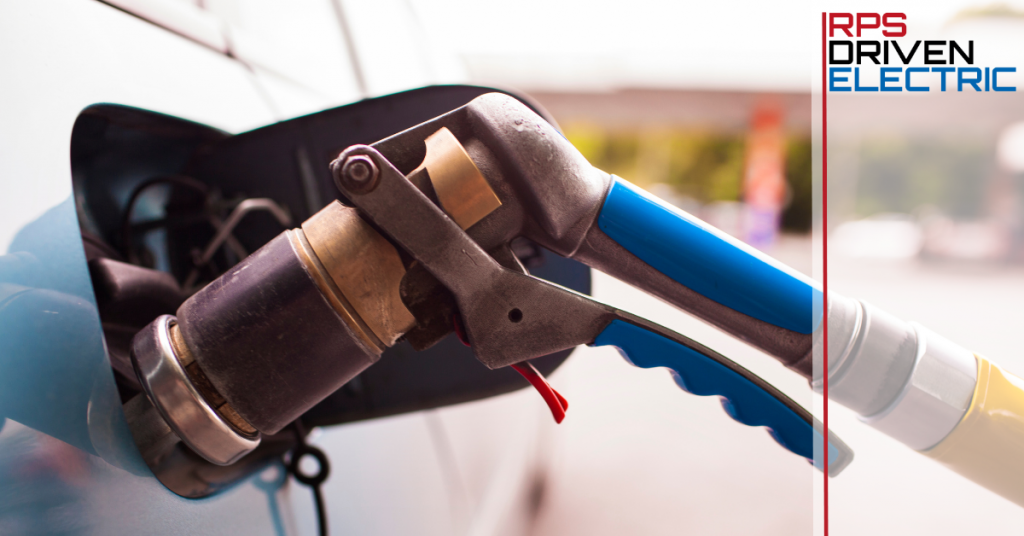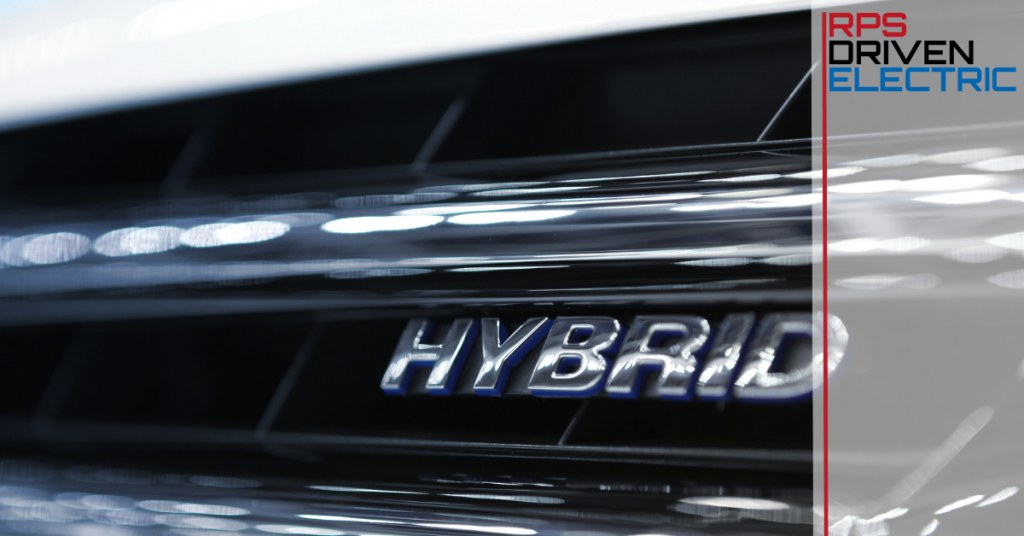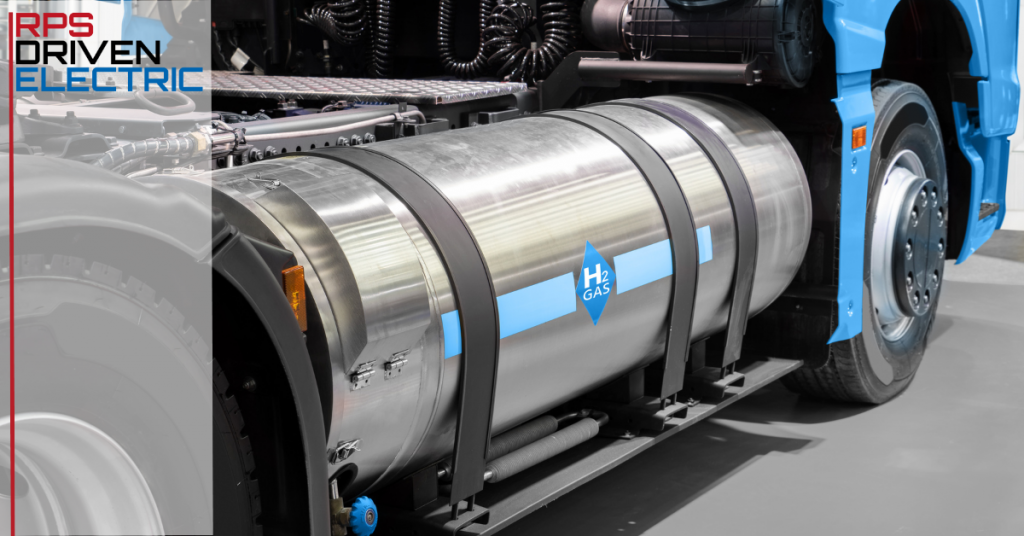Drivers have more choice than ever before in the fuel they use to power their cars. As a new driver, you will have to make the decision about which way you want to go. This article discusses the options, giving you the information you need to make an informed choice.
The options are:
- Petrol
- Diesel
- LPG/CNG
- Hybrid
- Plug-In Hybrid
- Range Extended Electric Vehicle
- Hydrogen Fuel Cell/Combustion
- Battery Electric Vehicle
Fuel Choices – Petrol and Diesel

The first ‘car’ powered by an Internal Combustion Engine (ICE) was invented by Francois Isaac de Rivaz in 1807. The Swiss engineer developed a liquid-fueled engine at the same time as other engineers developed a powder-fueled ICE. The vehicle first ran in 1808 using the same basic principles as brand-new petrol cars today. A fuel/air mixture is introduced to a cylinder and ignited by a spark, forcing the piston down and providing motion.
Over the next seventy years, a number of improvements led to Gottlieb Daimler and Wilhelm Maybach patenting their first 4-stroke engine. The pair began the production of motor vehicles in 1879. Daimler is the parent company of Mercedes-Benz while Maybach is the ultra-luxury brand of the group. Both are still in manufacture today.
In 1892 Rudolf Diesel, working for Machenenfabrik Augsburg Nurnberg (MAN), patented the world’s first diesel engine. It also worked on a four-stroke principle but where a petrol engine requires an external spark, Diesel ignites under compression with no spark.
Benefits of Combustion:
Petrol
Diesel
Pure combustion cars are being phased out, though Prime Minster Rishi Sunak announced this week that the date at which they will be banned has been moved back by five years. You will no longer be able to buy a pure-combustion car by 2035.
Fuel Choices – LPG/CNG

CNG stands for Compressed Natural Gas while LPG means Liquified Petroleum Gas. Both are sold as liquids under pressure and then the systems of the car ease the pressure until the fuel returns to a gaseous state. This gas is then mixed with air and introduced to the cylinder for combustion.
There are a number of benefits to using gas, not just for your pocket but also for the environment.
There are some significant drawbacks to gas cars. Firstly, you can’t actually buy a pure gas car, though some trucks are CNG only. Instead, they are sold as dual-fuel or Bi-Fuel vehicles. Currently, the only manufacturer selling gas cars is Dacia which offers the Sandero, Sandero Stepway and Duster as factory-built dual-fuel cars.
The fuel is also less energy-dense than petrol or diesel. You will notice an approximately 10% reduction in fuel economy when running on gas compared to liquid fuel.
Finally, CNG and LPG vehicles are pure combustion which means that they will also be phased out by 2035. MFG, a major petrol, diesel and gas retailer has committed to removing all their LPG and CNG refuelling stations and replacing them with electric vehicle charging points by next year.
Fuel Choices – Hybrid Vehicles

Hybrids are becoming increasingly popular. A hybrid vehicle is a vehicle that mixes both combustion fuel and electricity to drive the car forward. There are two types; Self-Charging Hybrid and Plug-In Hybrid.
Self Charging Hybrid
Comprised of usually a petrol engine and an electric motor, generally, a self-charging hybrid will drive two wheels of a car. They work in parallel, which means that you can’t use one without using the other.
The petrol engine drives the car forward, then when it isn’t needed it’s output is diverted to charging a battery. Usually, this battery is about 6kWh in size, so very small.
The battery is charged using energy which would otherwise be wasted.
Modern self-charging hybrids have a very limited zero-emissions range but usually they cannot run in EV-only mode. The motor is used to support the engine which reduces fuel consumption.
Plug-In Hybrid
A plug-in hybrid is similar to a self-charging hybrid. Generally, they have a larger battery than a self-charging hybrid, usually around 16kWh which will be good for 30-60 miles of zero-emissions driving.
While a lot of the energy which would be wasted in decelerating is recovered using regenerative braking, the main source of electrical power is the plug. They charge in the same way as a battery electric vehicle.
Plug-in hybrids are often all-wheel drive, with the combustion engine driving the front wheels while the electric motor drives the rear wheels. This improves traction in low-grip situations.
Because hybrid vehicles incorporate electrification, they are not subject to the 2035 ban on combustion vehicles. They would be affected by the proposed EU 2035 ban on any combustion but this hasn’t passed the European Parliament and become law. If the EU does ban hybrids from 2035 it is likely that the availability of hybrid electric vehicles in the UK will end at that time.
Fuel Choice – Range Extended Electric Vehicle
A range-extended electric vehicle is similar to a hybrid in that it has both an electric drivetrain and a petrol motor. The difference here is that the petrol motor has no link to the wheels at all. Instead, the ICE turns a large alternator, effectively a generator, which tops up a battery. The battery can also be charged by plugging in.
The battery supplies electricity to the motor, which drives the car forward.
When the battery, which is often around 20kWh in size, is getting low on charge the ICE kicks in to charge the battery. REEVs have all the range-extending tech of electric cars too and are almost as green as a BEV (Battery Electric Vehicle).
Nissan has taken this tech and used it to develop their e-Power products. This is what they call the electric car, unplugged. The Qashqai and X-Trail e-Power models have a 2kWh battery and a small petrol engine. There is no way to plug the car in so all the electrical power is produced by the ICE.
The main benefits of REEVs are that you can go almost any distance, given that you can refuel at the wide network of petrol stations. Because the motor is just turning a generator, it never revs too high, which means that it’s a more efficient form of combustion.
It is unclear if the Nissan e-Power system will survive the combustion ban, but a REEV, such as BMW’s i3, Vauxhall’s Ampera or Mazda’s MX-30 REV have the plug-in capability which means they can continue to be sold.
Fuel Choice – Hydrogen Fuel Cell/Hydrogen Combustion

Manufacturers are exploring the use of Hydrogen as a fuel source. Quite a few are working on Hydrogen Combustion which burns Hydrogen gas in a pure-combustion engine. There are no currently available Hydrogen combustion vehicles on sale.
Toyota have built Hydrogen Combustion Corrola race cars as tech demos which have successfully raced at the Nurburgring’s 24h Rennen. They are also working on a Hydrogen Combustion pick-up truck for the American market while Ford has developed a H2 powered V8.
Most manufacturers are instead looking at Hydrogen Fuel Cell technology. This uses a fuel cell stack to convert Hydrogen and Oxygen into electricity. The only emissions as a result of producing electricity by a fuel cell are water. The electricity is then stored in a battery and used to power an electric vehicle drivetrain.
There are currently two Hydrogen Fuel Cell Electric Vehicles in the UK. The Toyota Murai, which is on its second generation, and the Hyundai Nexo. The Toyota is a large saloon car while the Hyundai is a Tuscon-sized SUV. Both are very expensive, with prices around £65,000 and are not currently available to order.
Hydrogen does have significant advantages for road haulage which is why all the truck manufacturers are working on FCEV trucks.
Fuelling is a significant problem, with only six currently operational Hydrogen filling stations in the UK. Two of those are in Aberdeen.
Fuel Choice – Battery Electric Vehicle

Battery electric vehicles are zero tailpipe emissions vehicles which means they are significantly greener at the point of use. Electricity is put into the battery via a charger, some use home chargers which charge at around 7kW per hour, while others charge on the public network which is more expensive but charges at speeds of up to 350kW per hour.
When in use energy comes from the battery to the motor(s) which drive the car forward.
While I am particularly likely to trumpet the benefits of BEV, after all my driving school is called RPS Driven Electric, there are some drawbacks. These vary from model to model.
Pros
Cons
Fuel Choice – Conclusion
Quite frankly it is impossible for me to draw any conclusion for you. The choice of fuel you go for will be a result of a mixture of factors including:
For me, the choice is electric. I do high miles which means I have to reduce the impact of each mile as much as I can. But I can charge every night at home cheaply. You will have to make your own decisions, but hopefully, this article has given you the information you need to make that informed decision.






